

How To Network Without Being Awkward
You don’t need to be extroverted to network—just clear, curious, and human. Connections grow naturally when you stop performing and start showing up.

You don’t need to be extroverted to network—just clear, curious, and human. Connections grow naturally when you stop performing and start showing up.
Networking can feel awkward—especially if you’re shy, introverted, or just hate forced small talk. If you’ve ever dreaded a networking event because:
Then you’re not alone.
But the simple truth is that most people actually like being asked for advice—it’s flattering. And when you reach out to people you already know, it isn’t “cold outreach.”
It’s a reconnection.
Mindset shift: Instead of thinking, “I’m asking for a favor,” try “I’m seeking perspective.” That simple reframe turns networking from something cringey into something natural.
This guide will walk you through practical networking tips for introverts, swipeable scripts, and a simple follow-up cadence that keeps connections alive—without the awkward.
Because clarity creates confidence, and that’s exactly what we’re mapping out here.
Before you send a single email, take five minutes to create your Inner Circle Activation List:
Pro Tip: Don’t just list who can help you—note how you can help them, too.
Networking is an exchange, instead of a transaction. So what you need is a strategy, not a scramble.
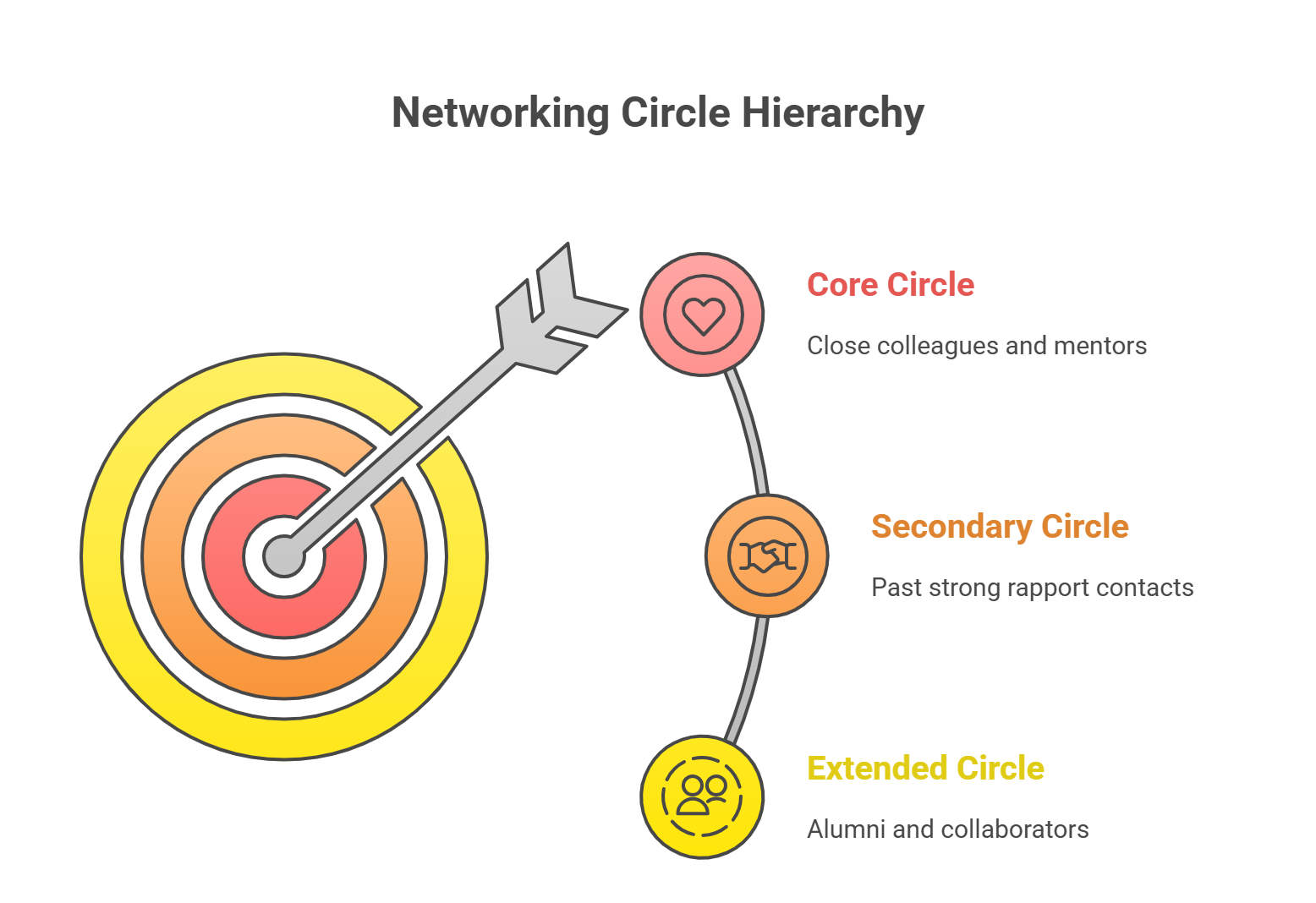
Outreach doesn’t have to feel spammy. Think of your email or DM as a warm digital handshake (figuratively).
Here’s a proven structure with an example:
This isn’t a script—it’s a conversation.
You’ve got this, and we’ll make sure you keep moving.
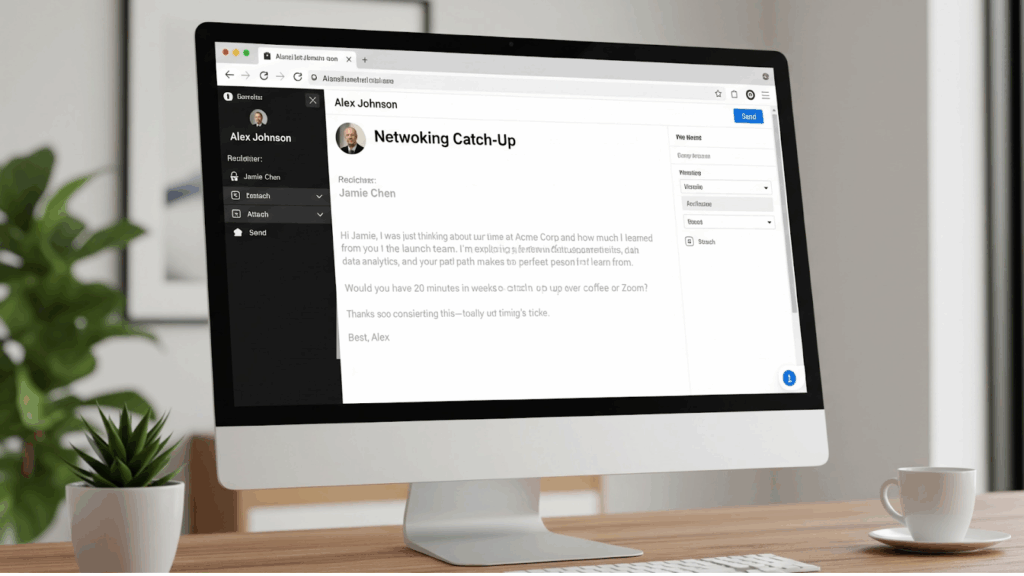
Struggling to bring these scripts to life?
Our small group masterclass series gives you a safe space to practice networking conversations, get live feedback, and build momentum together.We don’t do templates. We do clarity—and in a workshop with peers, it sticks.
Whether in person or online, small talk doesn’t have to be awkward.
Use these conversation starters:
These are specific, personal, and open-ended—aka the best networking conversation starters.
Once the ice is broken, you can naturally transition into your ask:
“I’d love to hear your perspective on [industry]. Maybe we could grab a quick coffee or Zoom sometime?”

If you’re shy, you don’t need to “fake extroversion.” Instead:
Your advantage here? Listening!
This is a superpower, and you’ll stand out because most people don’t do it well.
Networking for introverts isn’t about forcing yourself to be loud—it’s about using the skills you already have.
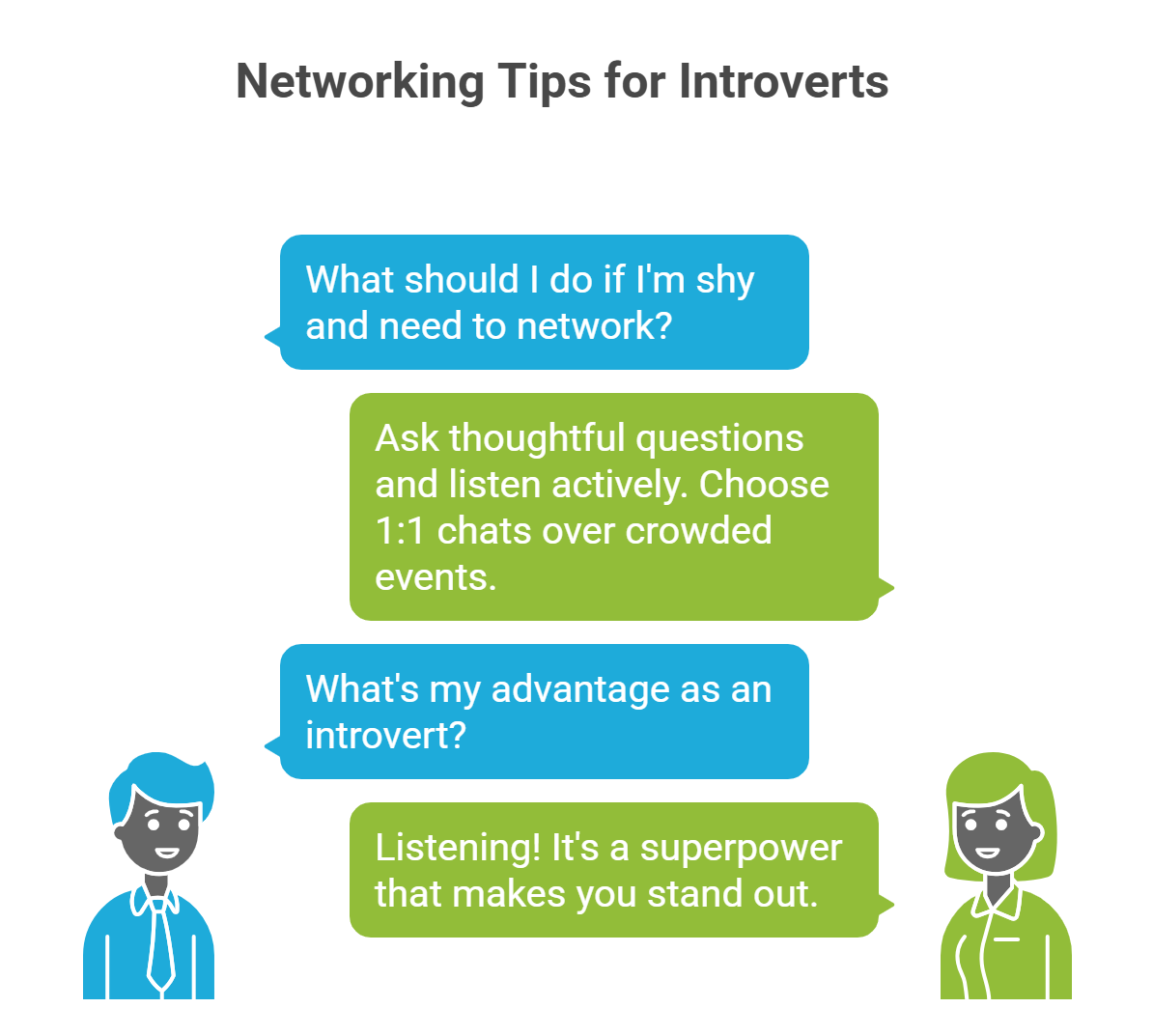
The magic of networking is in the follow-up.
Here’s the framework—because vanishing like a bad Tinder date is not a strategy, and clarity in your follow-up beats fumbling with guesswork:
This keeps you on their radar without feeling pushy.
It’s not about inbox clutter—it’s about staying relevant, authentic, and easy to remember.
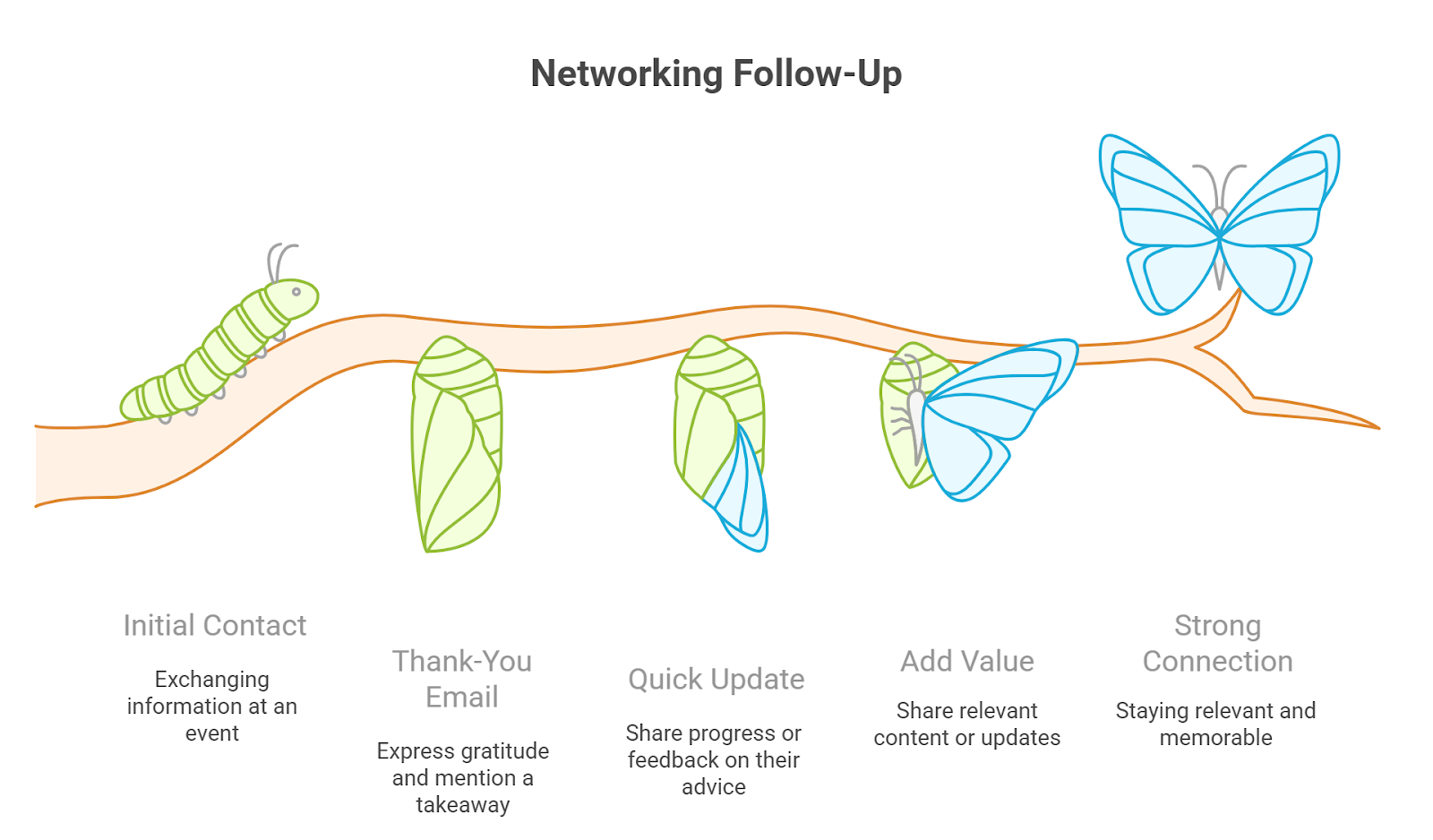
| Instead Of This | Do This |
|---|---|
| Sending generic mass emails | Personalize your outreach |
| Asking for a job right away | Ask for advice first |
| Being vague (“keep me in mind”) | Be specific: intros, resources, or trends |
| Ghosting after they help | Follow up and nurture |
| Only networking when desperate | Build relationships consistently |
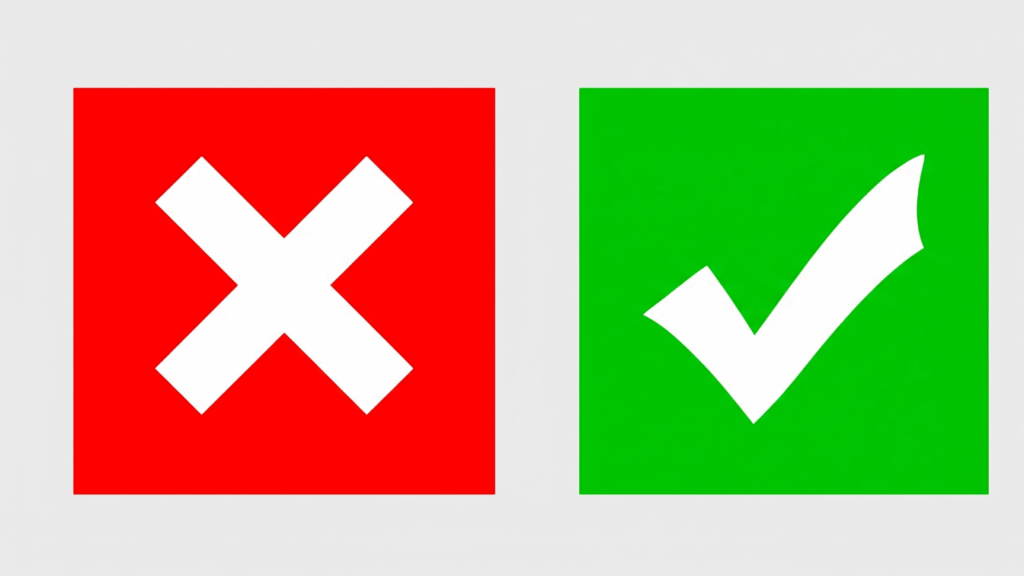
Networking isn’t about collecting business cards.
It’s about building authentic connections that spark clarity and momentum.
Whether you’re networking for graduates launching a career or building professional connections during uncertainty, one thing holds true: clarity beats guesswork, and a simple strategy makes it stick.
Start with your inner circle, follow a clear cadence, and use thoughtful scripts—and suddenly, networking stops feeling awkward. It becomes a tool that moves your career forward.
Want to go deeper?
Join our Strategic Networking Workshop.
Let’s map it out together and turn your conversations into confidence-building connections that actually open doors.

Keep it real, keep it short, and remember—it’s about perspective, not favors.
Use the 4-step structure: connection → purpose → ask → gratitude.
Send a thank you in 24 hours, update in 1 week, touch base again in 2 weeks.
Send 1–2 polite nudges spaced a week apart. Then move forward without pressure.


